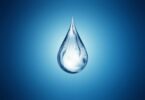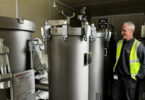Ira Guha is the founder of Asan, an award-winning social venture committed to reducing period product waste and ending period poverty.
As a student, Ira designed and patented the Asan Cup, a sustainable menstrual cup that can be re-used for up to 10 years, preventing planet waste and pollution.
Ira believes that few people know or understand the environmental impact of period product disposal and explains why she is on a mission to change this outcome.
How did we get here?
Ever since the first sanitary towel was invented for mass consumption in the late 1800s and the first tampon was designed in the 1930s, period products have been contributing to planet pollution.
Whilst we rightly associate the design of mass produced sanitary products as a positive step for female emancipation & freedom of movement, the growth of the market has created a devastating effect on planet health that is far less known.
In 2024 the global tampon market was estimated at $5.5–6 billion USD, and it’s projected to grow steadily at a CAGR (Compound Annual Growth Rate) of 4–5% through the late 2020s.
Despite the popularity of tampons in some countries, they still only make up around 20–30% of menstrual products used globally. Pads dominate in many regions due to cultural and accessibility reasons.
And where access to pads is restricted for economic reasons, women in remote communities across the world use homemade cloths and rags. According to an article in The Lancet, these materials are subsequently incinerated in backyards, thrown into unused wells or buried. In effect, not only damaging for planet health but also impacting the health of those living in the community.
The size of the problem
According to data from the United Nations, more than two billion people around the world menstruate every month. The average person uses between 10,000 and 15,000 pads or tampons in a lifetime.
With India now the most populated country in the world, it is estimated that 355 million of the population are menstruating women, using a combination of homemade rags and sanitary pads.
Each year over 200 billion period products are thrown away worldwide and over 120 billion tampons are used and disposed of every year too.
Most of this period product waste ends up in landfill or oceans.
What’s more, it’s not just the waste of period products. It’s the entire supply chain from manufacturing to packaging, transport and distribution which is hugely wasteful.

How period products pollute
Sanitary pads are non biodegradable – made from approximately 90% plastic materials which can take up to to 800 years to break down into microplastics.
Whilst technically many tampon applicators are now made from recyclable plastics like polypropylene, they are mostly too small to be sorted at recycling facilities.
Tampon wrappers are often made from multilayer plastic films, which are non-recyclable in many municipal systems worldwide.
Water pollution
According to the Marine Conservation Society, up to 2 billion period products are flushed down the toilet in the UK each year.
When blocked sewage systems overflow period products are sent straight out to sea. Nowadays, single-use sanitary products and their packaging are some of the most commonly found plastic items in our oceans.
These microplastics escape into our oceans and pose a serious threat to marine ecosystems. The ingestion of plastic, particularly microplastics, can lead to starvation, internal injuries, and exposure to toxic chemicals. Furthermore, plastic pollution can disrupt habitats and negatively impact the entire marine ecosystem. because they contain noxious chemicals.
Waste & air pollution
Currently, around 50 million period products end up in landfill every month, which results in 200,000 tonnes of waste per year in the UK.
As waste decomposes, it produces methane, a potent greenhouse gas that contributes to climate change. Landfill sites can also leach harmful chemicals into the soil and groundwater, leading to contamination and potential health risks for nearby communities.
The decomposition process is a long one. Disposable pads and tampons contain plastics that take between 500 to 800 years to break down – a prolonged process during which microplastics are produced.
Some landfills are turning to incineration as a faster way to break down waste. But incineration is also harmful as the burning of waste (to generate energy), poses significant environmental problems. It releases harmful pollutants into the air, contributing to climate change and air pollution.
According to the Energy Justice Network, landfill is bad but incineration is even worse for the environment.
Lack of awareness
I believe that millions of women across the world are unaware of the environmental impact involved in disposing of period products. Societal, cultural and habitual behaviour factors are linked to why there hasn’t been much change.
Even in the UK, a 2022 survey from PhS shows there is a distinct lack of awareness about why flushing tampons is terrible for our planet.
Market forces & status quo
The problem isn’t confined to a lack of consumer awareness. The manufacturers and retailers of disposable period products have a vested interest in maintaining the status quo with monthly profits from tampons and pads . This means that women searching for reusable options find them harder to locate on pharmacy and supermarket shelves.
I am proud that one single Asan Cup averts the waste of 2,500 period products. I am hoping that by trying and using reusable products, people find a way to avoid period product pollution, whilst also feeling safe and healthy








